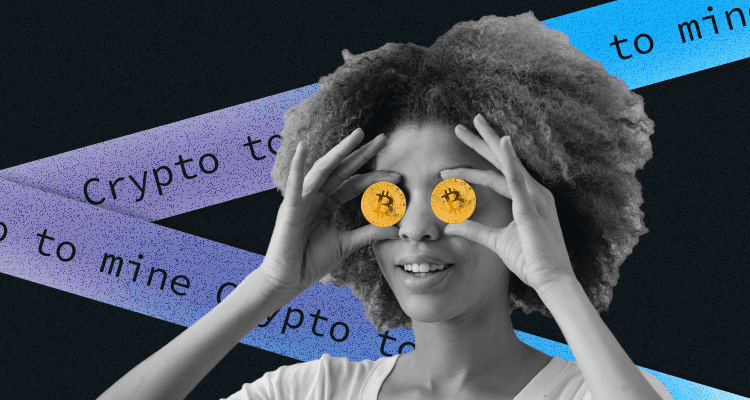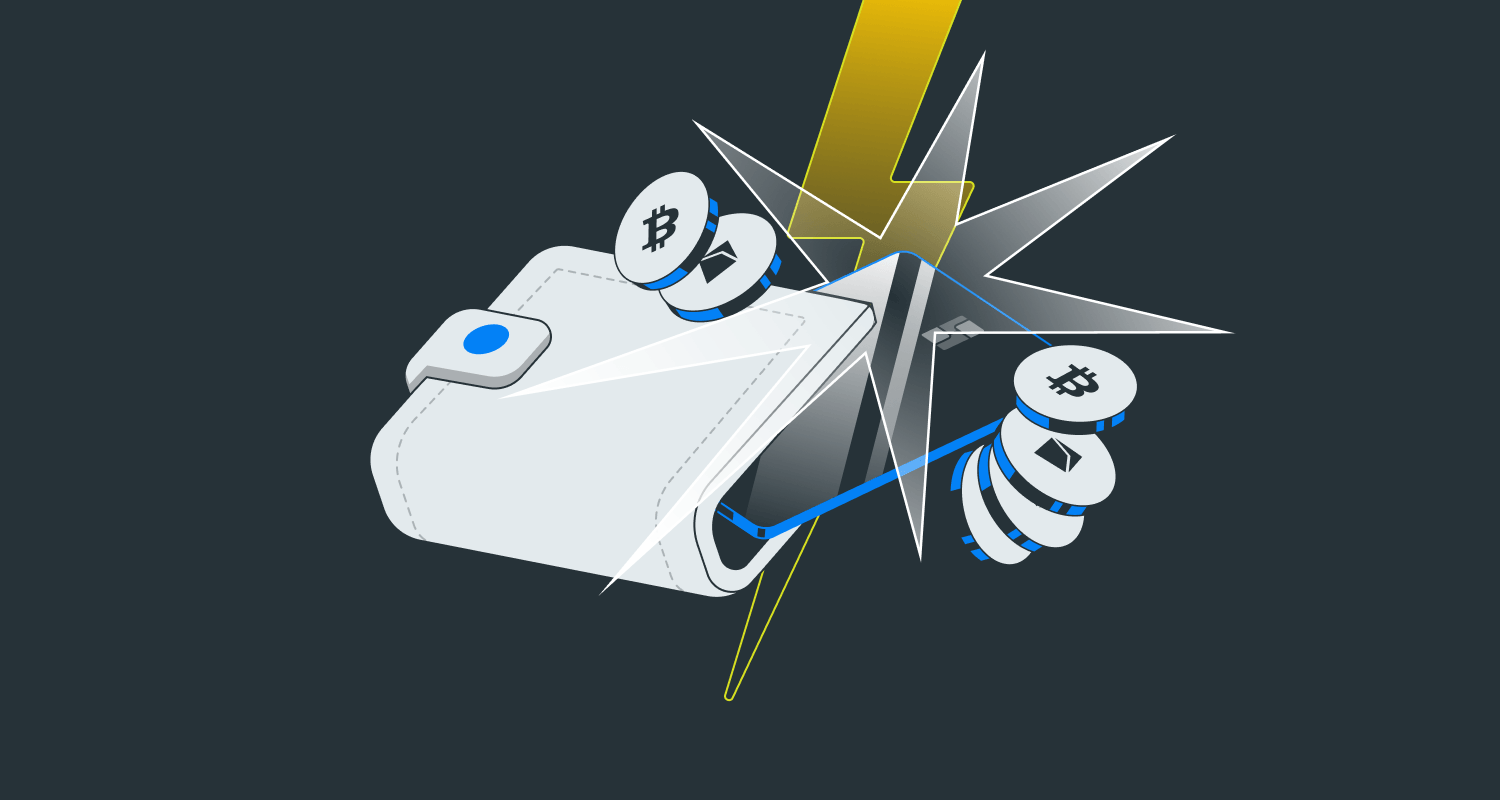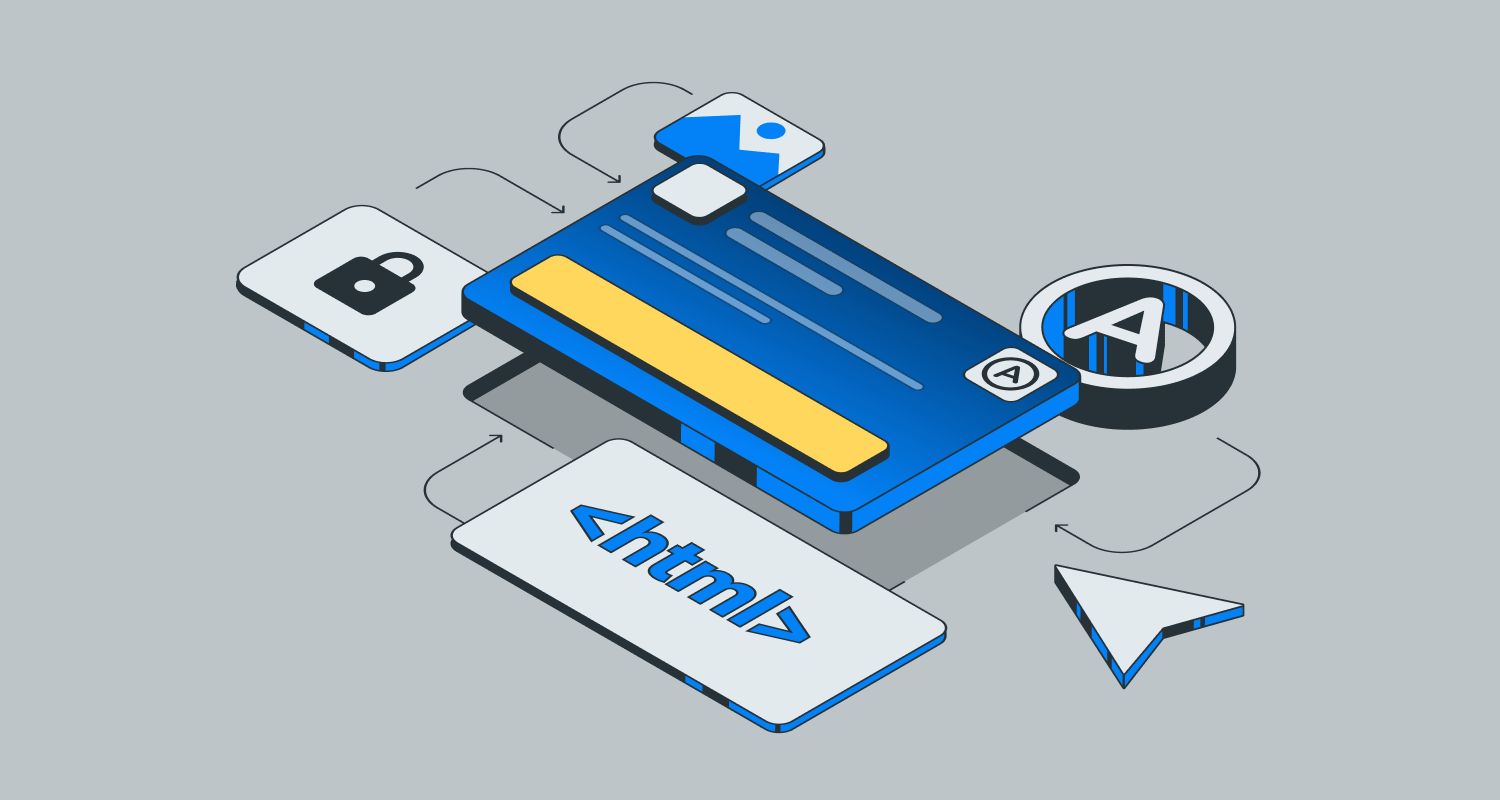TEST TEST TEST !!!

Still, deeply regret not investing in Bitcoin earlier? Relax. We all feel it from time to time. You have some options to deal with this feeling, such as crying yourself to sleep every night until you feel better or checking out other promising coins on the market.
Our new article below is about the best crypto to mine in 2023. But before that, let's just quickly check what cryptocurrency is.
A cryptocurrency is a form of currency that remains only in digital format. Crypto is so awesome that it allows you to pay online without going through an intermediary, such as a bank, and it also can be held as an investment.
What Is Cryptocurrency mining? What is GPU?
So, what does it mean to mine crypto? In a nutshell, mining is the process that cryptocurrencies use to generate new coins and verify recent transactions. But this process is somewhat complex and involves substantial decentralized networks of computers worldwide. Every transaction is documented through verified and secure blockchains and virtual ledgers. As the computers in the network contribute to their processing power, they are rewarded with some new coins. So, it goes in circles when the miners maintain the blockchain and keep it secure. The blockchain, in its return, provides the miners with the coins. Sounds a bit complicated? No worries! It is easier than it seems.
You should know that the mining process can be divided into 3 types: GPU mining, i.e., video cards-based mining, CPU mining, i.e., and processor-based mining. ASIC-based mining on special equipment intended to mine cryptocurrencies that work on specific algorithms. Which way to choose is up to your technical equipment and preferences.
Let's look closer at GPU mining. GPU is video-based mining. Technically, it is the video card of your computer required for gaming. GPUs were initially designed to make images for computer graphics and video game consoles. But since the early 2010s, GPUs can also accelerate massive data calculations. Sounds cool, right? Wait, that's not all.
Well, to be honest, the GPU has significant disadvantages, such as it consumes much power compared to the ASIC. GPU mining has benefits as GPU miners are flexible in mining various cryptocurrencies. If the market is unstable and bearish, miners can switch among coins.
How to Mine Cryptocurrency. Crypto mining methods
Hey, whaddya, know there are only three main ways to mine crypto. Yep, just three. First, you can buy them on an exchange like Coinbase or Binance, receive them as payment for goods or services, or virtually "mine" them. Let's have a look at the third category in more detail.
Only 10 years ago, when the grass was greener, anyone with a decent home computer could organize mining for crypto at their homes. You did not need some superpower to do so. But, as the blockchain has grown, the computation power demanded to maintain it has surged.
Some amateur miners can hardly be successful in mining anything profitable these days. Plus, all mining is now done by specialized companies or groups of people who band their resources together. Anyway, it is still great to know how it works and what methods the mining process requires. Alrighty, let's get to it:
- Specialized computers make the required calculations to certify and record every new bitcoin transaction and confirm that the blockchain is secure. To ensure that the blockchain is secured and verified, it takes a vast amount of computing power, which is voluntarily contributed by miners.
- As I said before, mining takes a lot of computer power, making mining look more like running a big data center. The mining companies have to buy the mining hardware and pay huge bills for the electricity as the computers require it to be kept running and cool. As you can guess, it costs an arm and a leg. It also means that earned coins must cost more than the cost of the mining process.
- This is not all. Mining itself is sort of a lottery. The network holds such a lottery as every computer on the network races to be first to guess a 64-digit hexadecimal number known as a "hash." The faster the computer, the faster it can spit out the guesses and get the reward for being a miner.
The one is getting the hash updates the blockchain ledger with all the newly verified transactions by adding a freshly verified "block" containing all those transactions to the chain. But, the thing is, the mining process is not unlimited. In late 2020, the reward for a miner was 6.25 bitcoin – but it will be reduced by half in 2024. What makes the process even harder is that the reward will keep decreasing until there are no more bitcoins left to be mined! There will only ever be 21 million bitcoin. The final block should theoretically be mined around 2140. When this day comes, miners will no longer rely on newly issued bitcoin as a reward but instead will depend on the fees they charge for making transactions. Such a story…
If you're still willing to start your own mining journey, check out the list of things you definitely need for this:
- Free mining software package
- Free private database; your coin wallet will hold all your earnings and allow you to view all your transactions
- Membership in an online pool
- Membership at an online currency exchange
- A powerful computer, better a custom-built one for mining easily
- A specialized processing device or ATI Graphic Processing Unit (GPU)
How to choose the best coin to mine?
Now, when you know heaps about how the mining process works, you may ask yourself how to choose the best coin to mine? Wait, wait, I will be there in a sec. First of all, there are several steps you need to take before you start any mining.
Start with checking the number of exchangers which support the coin. If only a few miners keep the coin, it may signify that the withdrawal can only be made to the internal wallet of the crypto exchange. That means that miners have to pay hefty commissions in exchange for withdrawals. Secondly, make sure that the coin you have chosen is legitimate. Some countries have not legalized crypto yet, so it is better to avoid the risk if your country does not allow you to trade. Then, evaluate if your mining equipment works well and if it will enable you to use it long-term. Last but not least, check the possibility of withdrawing to fiat.
Here we are!
List of the Top 10 Cryptocurrencies to Mine
- Bitcoin (BTC) Market cap: Over £537 billion
I bet you are not surprised that bitcoin is on our list. It is the most well-known decentralized coin created in 2009. Yet, the name of the creator is still a mystery. Bitcoin offers the promise of lower transaction fees than traditional online payment mechanisms do, and unlike government-issued currencies, it is operated by a decentralized authority.
Bitcoin uses cryptography to keep it secure. Bitcoin is not issued or backed by any banks or governments, nor is an individual bitcoin valuable as a commodity. There are no physical bitcoins, only balances held on a public ledger to which everyone has transparent access. Despite it not being a legal currency in most parts of the world, bitcoin is very popular and has triggered the launch of hundreds of other cryptocurrencies.
Bitcoin's price has surged over the last decade and is considered to be the most profitable crypto to mine. For example, in May 2016, you could buy a bitcoin for about £370. As of February 1, 2022, a single bitcoin's price was over £28,000. That's a growth of nearly 7,600%.
- Polkadot (DOT) Market cap: Over £14 billion
Polkadot cryptocurrency was launched in 2020 by Gavin Wood. Between September 2020 and February 1, 2022, its price grew by about 565%, from £2.15 to £14.33. Polkadot (DOT) is a unique PoS cryptocurrency that delivers inseparability from other blockchains. It was designed to connect permissioned and permissionless blockchains and oracles to allow systems to work together under one roof. The prominent feature of Polkadot is its relay chain, which provides for the inseparability of varying networks.
That allows developers to create their own blockchain while also using the security that Polkadot's chain already has. This concept in Polkadot is known as shared security.
- Litecoin (LTC) Market Cap, £ 6.994 billion
Litecoin was launched in 2011 by Charlie Lee, an MIT graduate, and former Google engineer, and was among the first cryptocurrencies to follow in the footsteps of Bitcoin. Litecoin is based on an open-source global payment network that is not controlled by any central authority and uses the script as a PoW, which can be decoded with the help of consumer-grade central processing units (CPUs).
It is worth mentioning that Litecoin has a faster block generation rate than Bitcoin and thus offers a faster transaction confirmation time.
Other than developers, a growing number of merchants accept Litecoin. As of March 14, 2022, Litecoin has a market capitalization of $7.4 billion and a per token value of around $106, making it the 21st-largest cryptocurrency in the world.
- Ethereum (ETH) Market cap: Over £240 billion
Ethereum is both a cryptocurrency and a platform. It is trendy among program developers because of its potential applications, such as smart contracts that execute without fail when conditions are met and non-fungible token (NFTs). Ethereum has also experienced colossal popularity and advancement. From April 2016 to February 2022, its price went from about £8 to over £1,980, increasing by nearly 25,000%.
Ether uses the proof-of-work hashing function Ethash. It can still be profitable to mine if you do it in a pool or via cloud mining. However, it might not be a good idea to mine Ethereum solo, even if you receive the entire block mining reward. ETH has the same advantage Bitcoin does, which is investment stability. You can be more or less sure that its price will remain high for the next few years.
- Tether (USDT) Market cap: Over £57 billion
Another highly popular blockchain-based cryptocurrency. Tether was developed by the crypto exchange BitFinex, and in October 2021, USDT became the fifth-largest cryptocurrency by market capitalization, worth more than $68 billion.
Tether is a stablecoin whose aim is to avoid volatility and allow cryptocurrency to be a store of value rather than a risky investment. Stablecoins also provide liquidity in a volatile cryptocurrency market where it would be hard to convert back and forth between cash and a cryptocurrency like bitcoin.
Tether tokens are backed by an equivalent amount of U.S. dollars, making it a stablecoin with a price pegged to $1.00. Stablecoins track traditional fiat currencies, like the dollar or the euro, which are held in a designated bank account.
Although competitors have popped up over the years, Tether is still the biggest stablecoin and is widely used for trading, loans, or earning interest. Tether could potentially be viewed as one of the riskier cryptocurrencies because of its transparency issues. But it's still crucial in the cryptocurrency world.
- Binance Coin (BNB) Market cap: Over £46 billion
Binance Coin was issued as an ERC20 token on the Ethereum blockchain, but now it has moved to its own mainnet chain. BNB was initially based on the Ethereum network but is now the native currency of Binance's blockchain, the Binance chain.
The coin was launched during an ICO (initial coin offering) in July 2017 and had 200 million BNB tokens. It offered 10%, or 20 million, BNB tokens to investors, 40%, or 80 million, tokens to the founding team, and the remaining 50%, or 100 million, to the various participants through the ICO process.
Since its launch in 2017, Binance Coin has expanded past merely facilitating trades on Binance's exchange platform. Now, it can be used for trading, payment processing, and other online purchases. It can also be traded or exchanged for other forms of cryptocurrency, such as ethereum or bitcoin.
In 2017 it was priced under 10p, but by February 1 this year, it had risen to around £277, a gain of approximately 377,000%.
- U.S. Dollar Coin (USDC) Market cap: Over £32 billion
USD Coin (USDC) is a digital currency referred to as a stablecoin and is a tokenized U.S. dollar, with the value of one USDC coin pegged 1:1 to the value of one U.S. dollar. The value of USDC is designed to remain stable, making USDC a stablecoin. On March 29, 2021, Visa announced that it would allow the use of USDC to settle transactions on its payment network.
Such stablecoins as USDC are commonly backed by reverse assets like dollars or euros to achieve price stability.
The tokenization of the U.S. Dollar into a USD Coin happens in three steps:
- A user sends U.S. dollars to the coin issuer's bank account.
- The issuer uses a USD Coin smart contract to create the equivalent amount of USD Coin.
- The newly minted USD Coins are sent to the user, and the substituted U.S. dollars are held in reserve.
You should remember that despite its name, USDC is not issued or backed by the U.S. government. USD Coin is also an open-source project, meaning anyone can view and contribute to the project's code.
- Cardano (ADA) Market cap: Over £26 billion
Cardano is well-known for its early embrace of proof-of-stake validation. Created by Charles Hoskinson, the co-founder of the proof-of-work (PoW) blockchain Ethereum, the coin quickly became popular.
Charles Hoskinson understood that scalability, interoperability, and sustainability on PoW networks like Ethereum are limited by the infrastructure due to growing costs, energy use, and slow transaction times. Thus, he positioned Cardano as an updated version of Ethereum. The former application can be used to streamline and simplify processes that require the collection of data from multiple sources. Cardano's main applications are identity management and traceability.
An interesting note is that Cardano is also known as "Ada," named after Ada Lovelace, a 19th-century countess and English mathematician recognized as the first computer programmer.
Cardano's ADA token has had relatively modest growth compared to other major crypto coins. In 2017, the ADA's price was about 1.5p. As of February 1, 2022, its price was about 77p, an increase of 5,150%.
- Solana (SOL) Market cap: Over £25 billion
Solana was founded in 2017 as an open-source project currently run by Solana Foundation based in Geneva, while the blockchain was built by San Francisco-based Solana Labs. The main feature of Solana is that it works much faster in terms of the number of transactions it can process and has significantly lower transaction fees compared to rival blockchains like Ethereum. It achieves this via its Proof of History technology. Solana claims to be able to process around 50,000 transactions per second, making it one of the fastest in the industry.
Solana's native token SOL primarily uses staking and transaction fees and has an unlimited supply. However, the blockchain burns 50% of the SOL used in each transaction fee to maintain a set level of year-on-year inflation. Anyone holding enough SOL can become a network validator and support the consensus process needed to run the blockchain. This mechanism generates rewards for users who stake in support of the blockchain.
Solana's native cryptocurrency SOL, has a market capitalization of over $66 billion, making it the fifth-largest cryptocurrency in the world. When it launched in 2020, SOL's price started at £0.57. By the beginning of February 2022, its price was around £74, a gain of almost 13,000%.
- Metaverse (ETP) $2.9 mill.
Metaverse is a relatively new coin launched in 2017. This is China's first public blockchain project which wants to repeat the success of Bitcoin.
The main goal of the project is "to construct a universe where digital assets (tokens) and digital identities (avatar) build the basis for asset transactions with the help of a valued intermediary (Oracle). This would establish a new blockchain ecosystem that will transform human society and allow us to enter the New Reality." To mine ETP, miners should join a large and reliable mining pool.
Easy Crypto to Mine
It is worth mentioning some Crypto, which is easier to mine than other coins. While mining bitcoin on an individual computer is no longer viable, there are other cryptocurrencies you can still mine at home if you're prepared to put in the effort.
- Dogecoin (DOGE)
Dogecoin is a peer-to-peer, open-source cryptocurrency launched in December 2013 by Jackson Palmer and Billy Markus. Dogecoin has the image of a Shiba Inu dog as its logo. While it was created nearly as a joke, Dogecoin's blockchain still has merit. Also, it has a loyal community of supporters who trade it and use it as a tipping currency for social media content.
Dogecoin's underlying technology is derived from Litecoin. It is also known for its low price as the cheapest crypto to mine.
2. Ethereum Classic (ETC)
Ethereum Classic (ETC) is one more open-sourced, decentralized, and distributed cryptocurrency. Ethereum Classic was created after The DAO hack in 2016. The original blockchain was split in two, with most users choosing to reverse the hack and return the stolen funds.
Since the split, ETC's primary goal has been to become a global payment network using smart contracts that can function without centralized governance. The currency has also had several improvements and upgrades. Ethereum Classic will likely continue to strive to be a digital store of value, meaning it can be saved and exchanged while retaining its value. The digital store of value for crypto includes its purchasing power that can be quickly turned into cash or used to buy another asset, similar to money.
As for the market cap, ETC has 133.9 million coins in circulation with a market capitalization of $6.1 billion, while ETH has approximately 120 million coins in circulation and a market cap of more than $417 billion. ETC trades at $46.00, while ETH trades for more than $3,475 per coin as of April 2, 2022.
- Monero (XMR)
Another open-source, privacy-oriented cryptocurrency was launched in 2014. Monero's blockchain is hazy, making transaction details and the amount of every transaction anonymous by disguising the addresses used by participants.
Along with anonymity, the mining process for Monero is based on an egalitarian concept. This is the principle that all people are equal and deserve equal opportunities.
Another advantage of Monero over Bitcoin is fungibility. This means that two currency units can be mutually substituted with no difference.
As of August 26, 2021, Monero was trading at $295.05 and had a market capitalization of $5.3 billion, putting Monero in the top 30 most popular cryptocurrencies in the industry.
4. ZCash (ZEC)
The ZCash currency appeared in 2016 when a group of scientists created a cryptocurrency. They wanted to make it similar to Bitcoin but with additional advantages, such as paying attention to user security and anonymity. In comparison with Bitcoin, ZCash verifies ownership of coins and transactions more anonymously, thus providing more protection for users.
This crypto coin can be mined on devices and computers, but the currency is best mined on dedicated systems called application-specific integrated circuits. Additionally, you can choose full transparency when you use ZCash, in which case its transparency is similar to that of bitcoin when transfers are conducted.
New Crypto to Mine
So, how do you find your new top crypto coin? Knowing how to evaluate coins will help you determine whether the coin is worth mining or not.
First, let's have a look at several places where you can monitor what new crypto coins are coming online:
- Cryptocurrency exchanges: Coinbase, Gemini, Kraken, Crypto.com, Binance, Gemini
- Data Aggregator: Coingecko, CoinMarketCap
- Social media: Twitter, Telegram, Discord
- Websites: Top ICO, Smith & Crown, ICO Bench
- Tools: PooCoin Charts,TokenSniffer
- DeFi Platforms: Applications that are supplanting traditional financial services. Some might have tokens or coins with prospects.
- NFT Marketplaces: OpenSea, Rarible, and SuperRare are popular marketplaces to look for new NFTs that show promise.
- ICOs: Initial coin offerings are fund-raising events for possible coin releases.
Another source is cryptocurrency exchanges. For example, Coinbase generally lists new coins on its website, but you'll need an account for better access. Binance has a list of new coins you can look over and investigate further to see if any are worth investing in.
Also, cryptocurrency data aggregators are very useful when finding new crypto coins. For example, CoinMarketCap collects and shows a list of new coins, their prices, market capacity, and trading volume. This service helps users get some of the information they need to determine what other investors think about the coin and whether it has potential.
Last but not least are social media websites. Twitter, for example, is one of the quickest moving and responding platforms in the U.S. You can use the notifications for specific keywords on Twitter such as "New crypto," "crypto release," or simply "crypto" to learn about a cryptocurrency-related tweet. Telegram is another platform that can deliver timely new crypto coin developments.
Conclusion
Cryptocurrency mining could initially seem complicated, but with some time and curiosity, you can learn more about different coins and make your choice. It is also well-known that the advantages of crypto-mining far outweigh its cons, and as long as one's budget corresponds with what they plan to mine, there is potential value to be made in any such venture.











